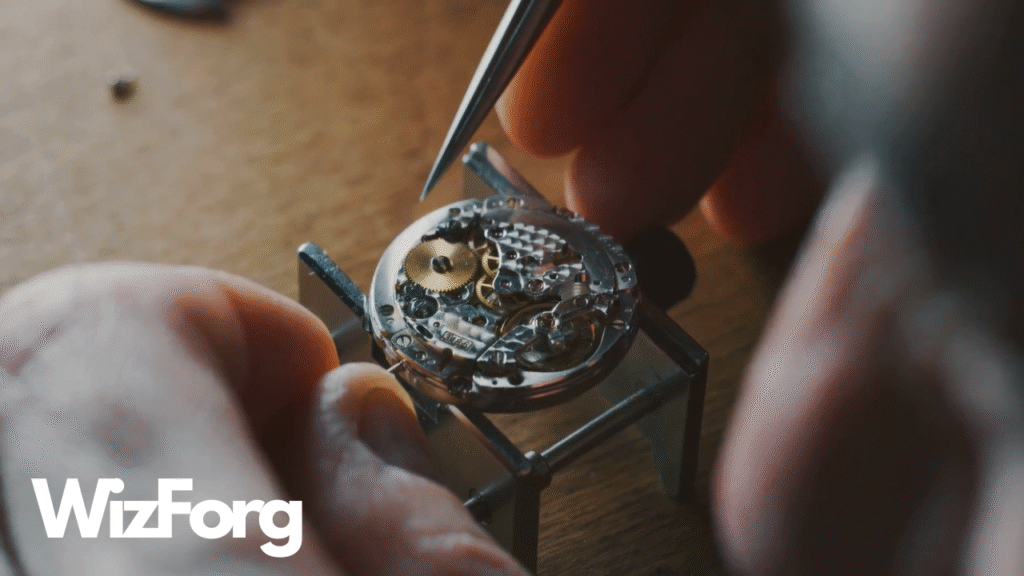A luxury watch from Switzerland is more than just a way to tell time. For some people, it is a symbol of success. For others, it is a form of wearable art or even a serious investment. Either way, the prices often surprise people. Some watches cost more than a car.
So why are Swiss watches so expensive? And why are counterfeit versions flooding markets around the world? The answer comes from history, craftsmanship, branding, and global demand.
The Prestige of Swiss-Made
The phrase “Swiss Made” carries more than two centuries of history.
In the 1700s, religious reforms in Switzerland discouraged people from wearing jewelry. As a result, many jewelers turned to making watches instead. Over time, this led to a watchmaking industry known for its meticulous craftsmanship, precision, beauty, and long-lasting quality.
Today, Switzerland is the global capital of luxury watches, a title earned through centuries of dedicated craftsmanship. Cities like Geneva and La Chaux-de-Fonds are home to some of the most respected watch brands, each bearing the mark of this long tradition when they say “Swiss Made.”
What Makes Them So Expensive
Luxury Swiss watches are expensive for several reasons.
First is the movement, the part of the watch that keeps time. Most high-end watches from Switzerland are mechanical, not powered by batteries. These movements contain hundreds of tiny parts that are assembled by hand. It can take months to build just one.
The materials also raise the price. Luxury watches often use sapphire crystal, which is extremely hard and scratch-resistant. Cases may be made of stainless steel, gold, platinum, or rare materials like meteorites. Some watches also include diamonds and custom engraving.
In addition, many watches include “complications.” These are extra features like moon phases, perpetual calendars, or spinning tourbillons. These details require expert design and add to the cost.
The Power of the Brand
The price is not only about the materials or the movement. It is also about the name.
Brands like Rolex, Patek Philippe, and Audemars Piguet have spent decades building their reputations. These companies invest heavily in advertising, celebrity endorsements, and event sponsorships. They also limit the number of watches they release, which keeps demand high.
Many buyers do not just want a great watch. They want a symbol of luxury and success. That is why some models are sold at even higher prices in the secondhand market. For many, a luxury watch is an investment, not just an accessory.
The World of Counterfeit Watches
The counterfeit market has grown rapidly because demand is so high and prices are even higher.
Fake Swiss watches are a multi-billion-dollar business. They range from cheap knockoffs sold on the street to high-end replicas almost identical to the original. Some fake watches even contain real Swiss parts.
These so-called “superclones” are made so well that even trained collectors can have trouble telling them apart from the real ones.
Counterfeit watches are illegal in many countries. Customs officials often seize them, and people who bring them across borders can face fines. Even if a fake watch looks good, it usually does not work well and has no real value. Buying a counterfeit watch not only supports illegal activities but also deprives you of the quality and craftsmanship a genuine Swiss watch offers.
How to Tell If a Watch Is Real
If you are shopping for a luxury watch, here are some tips to avoid buying a fake:
- Look for a serial number engraved on the watch case
- Check for a certificate of authenticity from the brand
- Use a magnifier to inspect tiny details like logos or micro-engraving
- Always buy from authorized dealers or trusted resellers
Most importantly, be cautious of deals that seem too good to be true. It is a fake if the price is way below market value.
Final Thoughts
A Swiss watch is much more than a tool for keeping time. It is a combination of engineering, tradition, and design. For those who appreciate detail and precision, it is something truly special. Its value goes beyond the price tag, representing a legacy of craftsmanship and a symbol of personal success.
But with great value comes the risk of imitation. The counterfeit market is growing fast; spotting the difference between real and fake has never been harder.
If you are going to spend thousands of dollars on a timepiece, make sure it is the real thing. When something becomes a global icon, people will always try to copy it.



